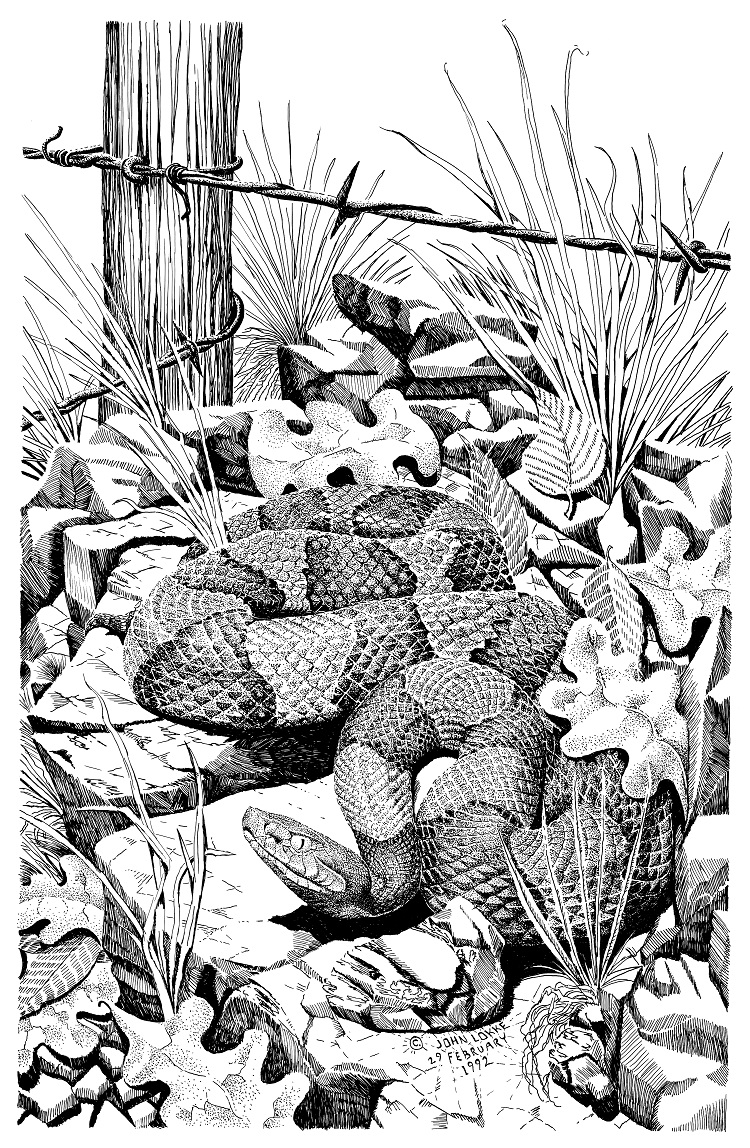
John Lokke, an artist, naturalist and historian, will present on the history of the Timber Rattlesnake, the largest and most imperiled venomous snake in Nebraska, at 7 p.m., April 22 in the Hardin Hall auditorium, 33rd and Holdrege streets. Lokke's presentation will be preceded by a reception at 6 p.m. The event is free and open to the public, and free parking is available.
Lokke will discuss the discovery of the Timber Rattlesnake in the Missouri River Valley and why its population numbers have been in decline since the 1930s.
"The Timber Rattlesnake is in peril in Nebraska because its habitat has been destroyed," said Dennis Ferraro, herpetologist and professor of practice. "Since (Lokke) is a historian, he wanted to know the history – when did someone first see a Timber Rattlesnake and where? He went all the way back to the 19th century."
Lokke began researching archival art by Karl Bodmer, a 19th-century Swiss artist who traveled with German Prince Maximilian of Wied to explore the then-pristine American West. Influenced by their work, Lokke embarked on a mission to document the same stretch of the Missouri River along the Kansas-Nebraska border that the prince and Bodmer explored in the late 1800s. The Timber Rattlesnake once flourished in this area but has now mostly vanished.
Lokke documents his quest for the Timber Rattlesnake with data on the area's history through interviews with longtime area residents and with art that includes drawings, paintings and photographs.
Signed, limited edition copies of selected Lokke drawings will be available for purchase at the event.
"He started off with pen and ink, then he went to a lot of charcoal and now he's doing a lot of watercolors," Ferraro said. "(Some of) the pen and ink drawings took him six months each. These drawings are so detailed – you can count the scales on those snakes and they're the exact scale count on a real snake."
— Mekita Rivas, Natural Resources
More details at: http://go.unl.edu/3cmp